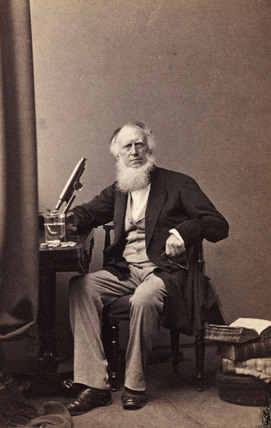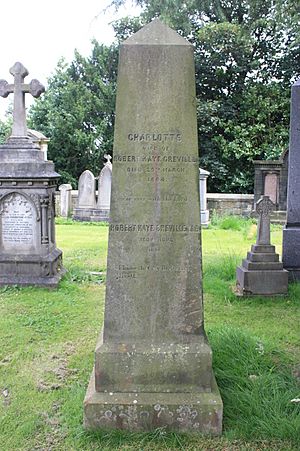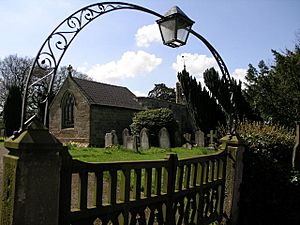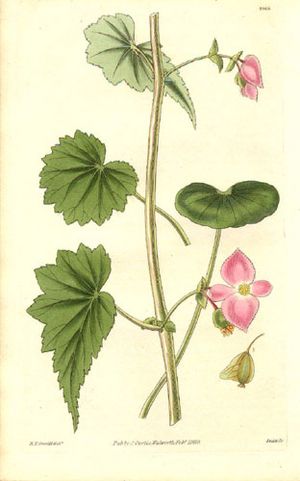Robert Kaye Greville facts for kids
Quick facts for kids
Robert Kaye Greville
|
|
|---|---|
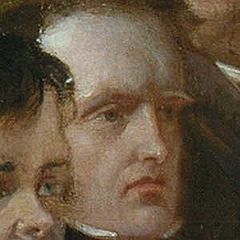
Robert Kaye Greville in a detail from an 1840 painting.
|
|
| Born | 13 December 1794 |
| Died | 4 June 1866 (aged 71) Murrayfield, Edinburgh
|
| Resting place | Dean Cemetery, Edinburgh |
| Nationality | British |
| Education | London and Edinburgh |
| Occupation | Academic |
| Known for | Polymath |
| Spouse(s) | Charlotte Eden |
| Parent(s) | Rev. Robert Greville and Dorothy Chaloner |
Robert Kaye Greville (born December 13, 1794 – died June 4, 1866) was a British scientist who studied plants and fungi. He was also a talented artist who drew pictures of nature. Besides science and art, he cared about important social issues. He supported ending slavery and was part of a movement that encouraged people to drink less alcohol. A mountain in Australia is named after him!
Contents
Early Life and Education
Robert Kaye Greville was born in Bishop Auckland, Durham. He grew up in Derbyshire with his parents, Dorothy and Robert Greville. His father was a church leader who enjoyed composing music.
From a young age, Robert was very interested in nature. He first studied medicine in London and Edinburgh for four years. However, he realized he didn't need to work for money. So, he decided to focus on botany, which is the study of plants. This had been a strong interest of his since he was a boy.
Becoming a Botanist and Artist
In 1816, Greville married Charlotte Eden. She was the niece of a famous person named William Eden. In 1823, he started drawing and publishing a science journal. It was called Scottish Cryptogamic Flora. He dedicated this journal to his friend, William Jackson Hooker.
The next year, he published a guide to the plants of Edinburgh, called "Flora Edinensis." Because of these important works, the University of Glasgow gave him a special doctorate degree in 1826. He gave many talks about natural science. He also collected many plant and fungi samples. These collections were later bought by the University of Edinburgh. Today, his plant and fungi specimens are kept at the Royal Botanic Garden Edinburgh.
Around 1826 or 1827, he took a boat trip to the Isle of May. Two students, William Ainsworth and Charles Darwin, joined him. They found it funny when Greville laughed so much at the loud seabirds. He even had to lie down on the grass because he was laughing so hard!
In 1828, a fellow botanist named Allan Cunningham honored Greville. He named Mount Greville in Queensland, Australia, after him. Mount Greville became part of an Australian National Park in 1948. It is now part of Moogerah Peaks National Park. The local Aboriginal name for the area is Moogerah.
In the 1830s, Greville lived at 1 Wharton Place in Edinburgh.
Interests and Activism
In 1835, Greville published some piano music. It was for a religious song written by Rev. W. H. Bathurst. From 1839 to 1840, he was the president of the Botanical Society of Edinburgh.
Besides science, Greville cared deeply about social issues. He was a strong supporter of the movement to end slavery. He also believed in keeping Sunday as a special day of rest. He was part of the temperance movement, which encouraged people to drink less alcohol.
In 1840, Greville was one of the four vice-presidents at a big meeting. It was the World's Anti-Slavery Convention in London. This event brought together people from many countries. Delegates came from America, France, Haiti, Australia, and other places. A famous painting was made to remember this important meeting. Greville is shown in a part of this painting. The painting is now in the National Portrait Gallery in London.
Greville was a member of many important groups. He was an honorary secretary of the Biological Society. He was also a Fellow of the Royal Society of Edinburgh. He was an honorary member of the Royal Irish Academy. He was also connected to natural history societies in Brussels, Paris, Leipzig, and Philadelphia. He helped put together the Church of England's hymn book in 1838.
Towards the end of his life, Greville started painting landscapes. He showed his paintings in art shows. He became a professional artist because he needed more money.
Later Life and Legacy
From 1865 to 1866, Greville served as President of the Botanical Society of Edinburgh again. This was his second and final time. He passed away at his home in Murrayfield, Edinburgh, on June 4, 1866. He was still actively working and preparing new papers for publication. He is buried in Dean Cemetery in Edinburgh.
Family Life
Robert Kaye Greville married Charlotte Eden on October 17, 1816. They were married in Bishop Auckland, Durham.
Robert and Charlotte Greville had three sons: Robert Northmore Greville, Eden Kaye Greville, and Chaloner Greville. They also had three daughters. One of their daughters, Charlotte Dorothea Greville, married Rev. David Hogarth in 1857.


